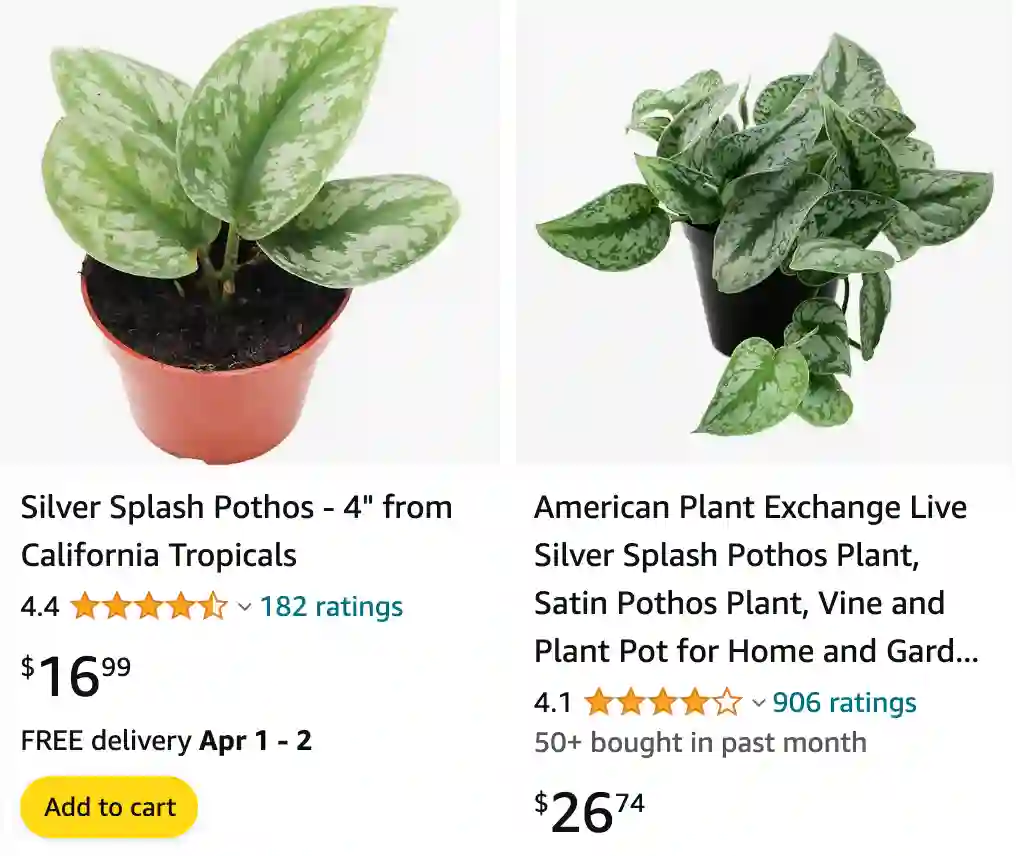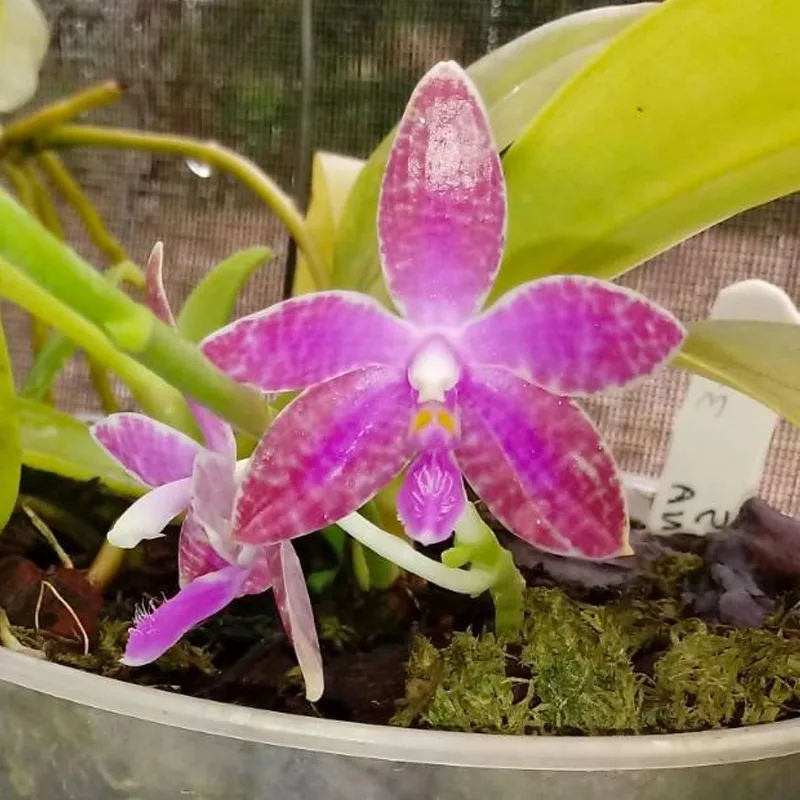
Scindapsus Silver Splash: Your Guide to the Shimmering Foliage
Hi, Ferb Vu here. Today, we’re diving into the world of the Scindapsus Silver Splash, a captivating houseplant that brings a touch of elegance and shimmer to any indoor space. Often mistaken for a Pothos due to their similar heart-shaped leaves, the Scindapsus Silver Splash boasts unique characteristics that make it a standout in its own right.
Whether you’re a seasoned plant parent or a curious beginner, this FAQ will equip you with the knowledge to cultivate a thriving Scindapsus Silver Splash.
36 Species in Genus Scindapsus
What is a Scindapsus Silver Splash?
The Scindapsus Pictus ‘Silver Splash,’ also known as the Silver Satin Pothos (though not a true Pothos), is a climbing vine native to Southeast Asia. Renowned for its heart-shaped, glossy leaves adorned with mesmerizing silver variegations, this plant adds a touch of whimsy and texture to any room.
Scindapsus Silver Splash vs Exotica
When comparing Scindapsus Silver Splash with Exotica, I found the Silver Splash to have more distinct silver variegation on its heart-shaped leaves, which added a bright contrast to my indoor space. The Exotica, on the other hand, had larger, glossy leaves with splashes of silver that gave it a more tropical look, but I preferred the finer details of the Silver Splash.
Scindapsus Silver Splash vs Satin Pothos
In contrast, comparing Scindapsus Silver Splash with Satin Pothos, I noticed that the Satin Pothos has stunning silver variegation that shimmers under the light, creating a subtle yet elegant ambiance. The Silver Splash, while also beautiful, had a more pronounced silver pattern that added a different kind of charm to my collection, making it a tough choice between the two for different aesthetic preferences.
Scindapsus Silver Splash vs. Pothos: What’s the Difference?
While both Scindapsus Silver Splash and Pothos are popular vining houseplants, there are key distinctions:
- Leaf Shape: Scindapsus Silver Splash has more pronounced, pointed heart-shaped leaves, while Pothos leaves tend to be rounder and broader.
- Variegation: Silver Splash boasts a striking silver variegation pattern on its leaves, which Pothos typically lack. Pothos varieties, however, come in a wider range of solid color options.
- Growth Habit: Scindapsus Silver Splash grows slower and bushier compared to the faster-growing, trailing Pothos.
- Light Requirements: Both plants prefer indirect light, but Scindapsus Silver Splash tolerates lower light conditions better than Pothos.
How Do I Care for My Scindapsus Silver Splash?
Here’s the good news: Scindapsus Silver Splash is a forgiving plant, making it ideal for forgetful plant parents or those new to the hobby.
- Light: Aim for bright, indirect sunlight. Avoid harsh, direct sun, which can scorch the leaves.
- Watering: Water thoroughly when the top inch of soil dries out. Overwatering is a leading cause of decline, so err on the side of underwatering.
- Soil: Use a well-draining potting mix formulated for houseplants. Adding perlite can further improve drainage.
- Temperature and Humidity: Scindapsus Silver Splash thrives in average room temperatures (between 65-80°F) and moderate humidity levels. If your home is particularly dry, consider occasional misting or a pebble tray filled with water near the plant.
- Fertilizer: During the growing season (spring and summer), a balanced liquid fertilizer diluted to half strength can be applied once a month. Withhold fertilizer during winter.
Common Scindapsus Silver Splash Problems
While generally low-maintenance, there are a few potential issues to watch out for:
- Brown Leaves: This can be caused by underwatering, overwatering, or insufficient light. Check your watering routine and adjust as needed. If the issue persists, consider relocating the plant to a brighter spot.
- Yellow Leaves: Similar to brown leaves, yellowing can indicate underwatering, overwatering, or lack of light. Additionally, older leaves naturally yellow and drop off.
- Leggy Growth: This typically occurs due to insufficient light. Move your Scindapsus Silver Splash to a brighter location. Pruning can also encourage bushier growth.
- Pests: Mealybugs and spider mites can occasionally become a nuisance. Regularly inspect your plant and treat infestations promptly with insecticidal soap or neem oil.
Remember: Early detection and intervention are key to resolving any plant problems effectively.
Can I Propagate My Scindapsus Silver Splash?
Absolutely! Scindapsus Silver Splash propagates readily through stem cuttings. Here’s a simplified approach:
- Select a healthy stem with at least two nodes.
- Make a clean cut just below a node.
- Remove the lower leaves, leaving a couple of nodes bare.
- Place the cutting in water or a well-draining potting mix.
- Ensure the node is submerged in water or buried in the soil.
- Provide bright, indirect light and maintain consistent moisture.
- Roots should develop within a few weeks. Once established, transplant the cutting into a pot with fresh potting mix.
Is Scindapsus Silver Splash Toxic to Pets?
Unfortunately, yes. Like most Scindapsus varieties, the Silver Splash contains calcium oxalate crystals, which are toxic to cats and dogs if ingested. These crystals can cause mouth irritation, vomiting, and difficulty swallowing. If you have pets, consider placing your Scindapsus Silver Splash on a high shelf or in a location inaccessible to curious furry friends.
Where Can I Buy a Scindapsus Silver Splash?
Scindapsus Silver Splash is gaining popularity, so you might find them at your local plant nursery or garden center. Online retailers specializing in houseplants are another option. When choosing a plant, inspect the leaves for any signs of damage or pests. Opt for a plant with good variegation and healthy foliage.
Additional Tips:
- Rotate your plant regularly to ensure even growth on all sides.
- Clean the leaves occasionally with a damp cloth to remove dust and improve light absorption.
- Repot your Scindapsus Silver Splash every 1-2 years or when the roots become pot-bound. Choose a pot that’s only slightly larger than the current one.
With proper care and a little TLC, your Scindapsus Silver Splash will reward you with stunning foliage and lush growth for years to come.
If i die, water my plants!



